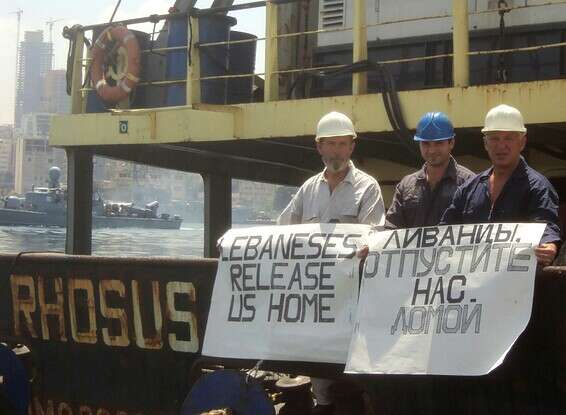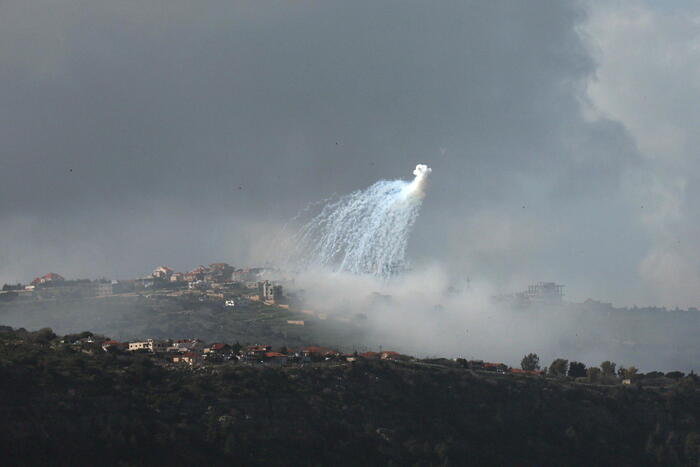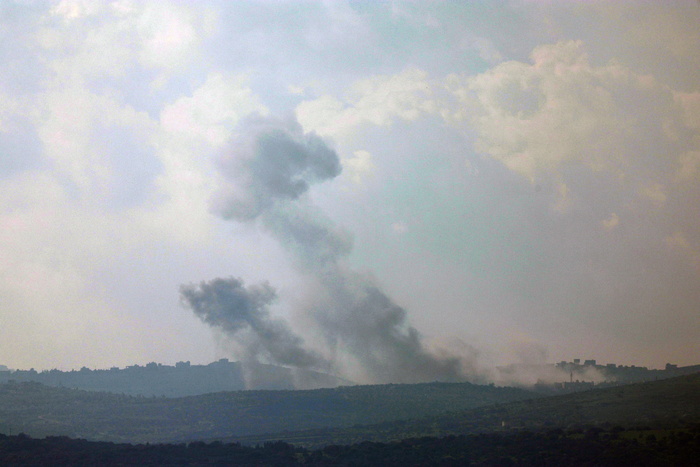According to the New York Times, 2,750 tons of ammonium nitrate were to arrive in Mozambique, Africa. • There, the ammonium was to be used to make explosives.
Captain of the ship Rosos (right) with the ammonia bags of nitrate
Photo:
Reuters
The ship was forgotten somewhere in the port, the captain unexpectedly decided to anchor in Beirut and the authorities in the country received more and more warnings about the explosive in warehouse number 12. This is what the New York Times inspected this morning (Saturday).
On November 21, 2013, at 11:27 a.m., a leaking ship with a Moldovan flag arrived at the port of Beirut. She never left the port, and her dubious cargo would lead to destruction in many parts of the city seven years later. The ship Rosos was carrying a cargo of 2,750 tons of ammonium nitrate, which apparently caused an explosion at the port when it was found in one of the warehouses at the port on August 4th.
The explosion in the port of Beirut // Photo: Arab networks
According to the publication, the ship's former captain told the New York Times that he had heard from other crew members that the Rosus had sunk at all in 2015 or 2016, but that time frame turned out to be inaccurate. Through analysis of satellite images and vessel tracking data, the New York Times investigation tracked the ship's trajectory. The investigation also revealed the exact location of the cargo, which was hidden in the port.
Rosus' timeline and location became particularly relevant yesterday when Lebanese President Michel Awan said the investigation should focus on three layers: "How the explosive entered the port, how it was laid, and how it was stored for seven years." He added that "it is impossible to catch any minister or citizen and put him in jail before interrogation." Owen, by the way, admitted yesterday that he had received information about the explosives at the port on July 20, and said that he immediately demanded to contact the general security of the country's Supreme Defense Council. He noted that "the substance entered Lebanon in 2013, without my knowledge of it and its degree of danger. What's more, my powers do not allow me to intervene directly in the port, and there is a hierarchy that needs to be respected."
The Roosos left the port of Batumi, Georgia in September 2013. Its cargo was to arrive in Mozambique and was intended to be used to manufacture explosives by a local company. However, the captain was instructed to anchor in an unplanned manner in Beirut in order to collect additional cargo. Captain Prokushev said he had to earn an extra amount from the extra cargo to pay the transit tax on the Suez Canal in Egypt.
In Beirut, authorities confiscated the ship after finding many defects in it and the lessee, a Russian businessman living in Cyprus, refused to pay the port taxes. From the moment of the boycott, the captain and some of the crew were instructed to stay on board. A photo from 2014, shows the captain standing next to some of the Nitrogen farms in the port. According to the investigation, these bags match the bags that will eventually explode according to a Lebanese journalist's post on Twitter. The picture also shows the company name: Rustway Azot LLC. The company name also appears in the ship's shipping documents in 2013. The last location of the vessel was shipped on August 7, 2014, the same month the ship's crew was released.
Since that day, the Rosus has remained abandoned. Authorities in Lebanon transferred the cargo to warehouse 12 at the port of Beirut. In 2015, the ship was moved up to the pier and remained there for another three years. According to satellite images published in the New York Times, a ship matching the dimensions of the Rosus was left empty there. In 2016 another image of the abandoned vessel is seen. And two years later the ship began to sink slowly into the harbor waters.
Despite this, the authorities did nothing to evacuate the hull, as it did not appear to interfere with the movement of other vessels. The Rosus was forgotten and so was its explosive cargo which was stored only 457 meters away from her in the warehouse. On August 4, a fire ignited the nitrous oxide and led to the deaths of at least 150 people and thousands injured.
Yesterday the Lebanese president said that since 2013, many governments have received a warning about the explosive charge of the Rosus. Meanwhile, 20 different people were arrested during the ongoing investigation.




/cloudfront-eu-central-1.images.arcpublishing.com/prisa/LBNNIBY325CABA2HAMMUUBWQRI.JPG)




